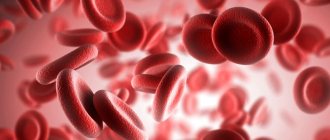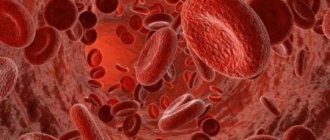General blood analysis
It is recommended that newborns and infants donate blood before the next feeding, so that as much time as possible has passed since the previous meal. For older children, it is better to wait 4 hours after eating. If possible, it is worth excluding high emotional and physical stress on the eve of the test.
If your baby is sick, has a fever, or is teething, you should wait for a general blood test until the unpleasant symptoms disappear and complete recovery.
The child needs to collect urine in the morning - at this time it is most concentrated. Before collection, wash your baby thoroughly. The main question of many mothers is: how exactly to get the baby to urinate in a jar? In the case of a newborn, an inflatable ring will help: you need to put the baby on it, and put a clean plate in the recess. It is also convenient to use a special children's urine collector, which can be bought at the pharmacy. If your little one already knows how to use a potty, seize the moment and substitute a sterile test jar in the middle of the process. You should not donate urine from a pot - there may be bacteria from the environment there that will distort the test results. And you will definitely have to wait for tests if the baby is sick, takes antibiotics, diuretics or uroseptics.
Neurosonography
Another necessary examination for babies under one year of age is ultrasound of the brain (neurosonography). There is no need to prepare specially for this procedure, but it is better for the baby to lie quietly, and maybe even sleep. Therefore, it would be a good idea to feed the baby well immediately before visiting the doctor.
Abdominal ultrasound
This research requires some preparation. The procedure can be hindered mainly by increased gas formation. Therefore, the day before visiting the doctor, the child and the nursing mother should follow a diet: do not eat black bread, apples, grapes, etc. If the baby is not yet a year old, then you can feed him 2-3 hours before the examination, a toddler 1-3 years old - 3 hours before the examination. 4 hours. But for older children, it is better not to eat for 6–7 hours before an ultrasound.
A popular test for kids who have any digestive problems. For the results of the study to be correct, it is necessary to stop taking any medications that affect the processes of digestion and absorption. You cannot conduct scatological studies after an enema, and after an X-ray of the stomach and intestines, analysis is possible no earlier than two days later.
When testing for occult blood, meat, fish, tomatoes, all types of green vegetables, and iron supplements should be excluded from the diet.
The best diet for a baby and a nursing mother on the eve of the test: milk, dairy products, cereal, mashed potatoes, white bread with butter, soft-boiled eggs, some fresh fruit. Such food is given for 4–5 days, feces are examined on days 3–5. You should not collect material from the diaper, because in this case urine, baby cosmetics, etc. may be mixed with it. If the little one has gone to the potty, you need to carefully remove the top layers with a spatula that are not in contact with the walls of the night vase.
Stool analysis for carbohydrates
This study is prescribed if lactase deficiency is suspected. The day before the test, the baby should be receiving the usual amount of breast milk or dairy products, otherwise the results will be incorrect. Also, before the study, it makes no sense to give the lactase enzyme.
It is important to correctly collect material for analysis. Under no circumstances should you collect from a diaper, because it absorbs the liquid part of the feces, which contains carbohydrates. Since babies suffering from lactase deficiency have very loose stools, the best solution would be to place the baby in a plastic bag or a thoroughly washed plastic container or plate.
Stool analysis for dysbacteriosis
Since dysbiosis is a violation of the composition of the intestinal microflora, for the analysis to be correct, it cannot be carried out during a course of antibiotics or bacteriophages. It is better to wait a few days after the end of treatment so that the flora has time to recover.
When the baby gets sick, parents call a local pediatrician at home or take the baby to a district or private clinic. After examining a small patient, pediatricians give directions for tests in order to better understand the cause of the disease and prescribe adequate treatment. Other tests include a blood test.
Many babies simply do not respond to blood sampling
General blood test for infants
The most informative, simple and accessible research method is a general blood test. It can be done from an early age, namely from birth. In order to get a reliable result, blood must be donated on an empty stomach, that is, without eating for twelve hours. Drinking water is allowed. The baby eats every two hours, he does not have a fasting state, so you need to donate blood two hours after eating.
A general blood test is taken for an infant in case of a protracted illness, when complications appear after an illness, before vaccination, and simply once a year for prevention.
The analysis requires capillary blood, which is taken from the toes and hands, as well as from the heel. Blood is dripped onto glass and rubbed with another glass. Then the laboratory assistant counts the number of blood cells under a microscope.
Blood consists of red blood (hemoglobin, red blood cells, hematocrit, color index) and white blood (leukocytes). Types of leukocytes: neutrophils, eosinophils, lymphocytes, basophils, plasma cells and monocytes. In addition to the number of cells, the examination pays attention to the shape, size and maturity of red blood cells.
Red blood cells carry oxygen and take up carbon dioxide. The norm of red blood cells depends on the age of the child. If there are few such cells in the blood, this means that a person has anemia - a pathological condition in which the oxygen supply to the body is disrupted. Anemia is a symptom of many diseases; it often occurs due to damage to the blood system.
Features of the structure of blood vessels in infants
The peculiarities are that the subcutaneous fatty tissue is loose and equipped with a dense network of small blood vessels, which is why the larger veins of the extremities are poorly visible.
The wall of veins (even large ones) in infants is thinner and less elastic than in an adult, so the vessels are more fragile. The blood pressure in the vessels of infants is low, blood flows out more slowly, which requires more time to draw blood from a vein. It happens that it is not possible to take blood from the ulnar vein. In this case, they resort to other available vessels: veins of the hand, foot, even veins of the cranial vault, from where blood is taken only in extreme situations.
Blood collection methods
There are two ways to donate blood:
- blood from a vein in a baby (venous blood);
- blood from a finger (capillary blood).
Parents often ask whether it is possible to replace blood sampling from a vein with finger sampling. As a rule, this is not possible, since capillary and venous blood have different compositions. And for a number of studies, a larger amount of blood up to 5 ml is required, which does not allow taking a test from a finger. And don’t forget about the fact that donating blood from a vein is not as painful as giving blood from a finger. Even using the example of an adult: when taking blood from a vein, the pain is usually less, but a pricked finger can still hurt for a long time.
Blood test norms for infants
Hemoglobin is part of red blood cells. This protein substance combines with oxygen and releases it where it is needed. In newborns, hemoglobin should be from 134 to 198 units. A baby's hemoglobin level should be 107-171 units per month. The amount of hemoglobin can determine the severity of anemia.
ESR is the rate of red blood cell union. ESR indicators are needed to determine the severity of the inflammatory process and make an accurate diagnosis. ESR increases during intoxication, inflammatory processes, chronic infections, after massive blood loss, and so on. ESR decreases with diseases of the gallbladder and liver, erythrocytosis, hyperproteinemia and the use of certain substances.
Red bone marrow produces platelets of blood called platelets. They last from two to ten days and are destroyed in the spleen and liver. Platelets form a clot and prevent bleeding, as they close the damaged vessel. Blood test standards for infants say that their platelet count should be 100-420*109/l. With an increase in the number of platelets, thrombocytosis appears, and with a decrease, thrombocytopenia appears.
Infant blood test explanation
In order to prevent the development of serious diseases in children, you need to be regularly examined by a pediatrician and have your blood tested. It is impossible to draw conclusions based on average statistical indicators; a blood test for an infant should be deciphered by a specialist. If a child has undergone surgery or been ill, the results of a general blood test may not be accurate. Normal indicators are not a sign of the absence of disease; the analysis needs to be deciphered as a whole; it is the ratio of the various elements that is indicative.
A blood test helps identify the presence of inflammation, worms and anemia. Clinical analysis should be done for prevention and during treatment.
For biochemical analysis, blood is taken from a vein. Before donating blood, you should not eat or drink water for six hours. This analysis helps determine the condition of systems and organs, identify rheumatic and inflammatory processes, as well as metabolic disorders.
How to take a blood test for a baby?
Blood must be donated on an empty stomach. Since this is not possible for infants, the mother should try to bring the baby to the clinic after feeding and wait about two hours. If a child ate before donating blood or screamed loudly during collection, his ESR readings may be increased.
If you need to donate blood immediately after visiting the pediatrician, the laboratory technician must be warned that the child has recently eaten so that the specialist takes into account any errors.
Analysis after childbirth in the maternity hospital, why they are needed
Good tests after childbirth (normal) characterize the physiological course of the postpartum period. Poor blood tests after childbirth must be interpreted by the attending physician in order to determine the cause of such deviations and correct them.
A clinical blood test is a standard test that allows you to find out the general condition of the body: the level of hemoglobin in the blood gives an idea of the oxygen saturation of the blood, the level of leukocytes can indicate the development of a purulent-inflammatory process.
The normal general blood test after childbirth includes the following main indicators:
- hemoglobin not less than 110 g/l,
- red blood cells not less than 4*10 in 12th century,
- leukocytes – up to 9*10 in the 9th century,
- platelets – at least 180*10 in 9 tbsp.
A coagulogram is a blood test that allows you to visualize the features of the blood coagulation system in the body.
A biochemical blood test is a spectrum of values that reflect the functional capacity of the liver in the form of total protein, liver enzymes (ALAT, AST), thymol test, and allows one to judge the quality of kidney function in the form of determination of creatinine and urea.
Clinical urine analysis is an analysis that characterizes the functioning of the kidneys, bladder and the entire urinary system. The presence of deviations will allow us to identify the level of damage and prescribe timely, competent therapy. A poor urine test after childbirth may indicate the development of pyelonephritis and cystitis. If blood is included in the urine test after childbirth, then the form may indicate a large number of red blood cells. However, you should not get upset prematurely - you need to retake the test in compliance with the rules.
Urinalysis according to Nechiporenko after childbirth, urine analysis according to Zimnitsky are specific tests prescribed for suspected dysfunction of the urinary system. These tests allow you to identify the number of inflammatory elements and red blood cells in the urine.
Urinalysis after childbirth
After childbirth, a general urine test is mandatory. Other urine tests (according to Nechiporenko, according to Zimnitsky, etc.) are prescribed on an individual basis if dysfunction of the urinary system is suspected.
How to take a urine test after childbirth?
Mandatory conditions before taking the test are to thoroughly clean the external genitalia and delimit the vagina with a cotton swab so that postpartum discharge (lochia) does not get into the jar and affect the results of the study.
Normal indicators of a general urine test after childbirth are as follows:
- specific gravity ranges from 1014-1024,
- leukocytes - 2-4 in the field of view,
- red blood cells – up to 4 per field of view,
- protein, ketone bodies, bacteria are absent.
Analysis of the placenta after childbirth: indications and interpretation
Sometimes doctors have to take a placenta test after birth. Why is this being done?
To carry out this manipulation, the following indications are required that complicate pregnancy:
- placental dysfunction with or without slowing blood flow;
- utero-fetal infection;
- chorioamnionitis;
- fetal distress;
- a history of miscarriage;
- antenatal fetal death;
- home birth;
- premature and post-term pregnancy;
- pregnancy due to the use of assisted reproductive technologies (IVF);
Histological examination is carried out by a histologist. In the material being examined, the doctor can detect calcifications, degenerative tissue changes due to chronic hypoxia (lack of oxygen), and inflammatory elements due to an existing uterine-fetal infection.
Poor analysis of the placenta after childbirth allows us to identify the cause of pregnancy complications, calculate the risks for the mother and child in the postpartum period, and also prevent these factors in subsequent pregnancies.
If there are diseases of the thyroid gland (hypo-, hyperthyroidism, diffuse toxic goiter), an analysis of the levels of the hormones TSH (thyroid-stimulating hormone), T3 and T4 is mandatory. If there is a pituitary adenoma, a test is performed to determine the level of prolactin.
Features of the analysis
The interpretation of the analysis of a baby is carried out only by a specialist; parents are strictly prohibited from taking measures to independently treat the child based on their assumptions. The accuracy of analyzes is influenced by many factors, both external and internal, so the results of analyzes may be controversial and distorted. Only a professional can compare all the factors with the results obtained.
The normality of all indicators in a blood test does not indicate that the child is completely healthy, however, this circumstance helps doctors in making a diagnosis or in treatment. The main aspects of the study are the analysis and characteristics of its elements, such as hemoglobin, red blood cells, platelets, leukocytes, etc.
The information content of this method is very high. Thus, deciphering a blood test in an infant allows one to identify pathological processes such as inflammation, anemia or helminthic infestations. A clinical blood test of a newborn is a more specific diagnosis, the decoding of which allows one to monitor already identified pathology, as well as draw conclusions about the effect of the course of treatment.
A detailed blood test of a baby shows a complete picture of the condition of all components. Also, a blood test for a newborn ESR informs about the erythrocyte sedimentation rate, identifies diseases of the endocrine system, liver and kidneys, in addition, various infections.
At what age can blood be taken from a newborn? How is blood taken from infants? The analysis is carried out at any age, however, there must be special indications for this. Some parents refuse to carry out this procedure, believing that the baby is experiencing severe stress, especially if blood has already been taken, however, if the parents are near the child at this moment, then he will feel protected and the blood test in children under one year old will take place without much stress.
How to make the procedure less painful and get a positive result the first time?
Now there are modern devices (venovisors) that help facilitate access to the vein.
The principle of operation is that by illuminating the limb, they project the course of blood vessels onto the surface of the skin, which makes it much easier to enter the vein. Such devices are used in private clinics.
You can make the procedure less painful if you use special needles (“butterflies”), lancets or scarifiers (for finger pricking). The scarifier (lancet) guarantees an optimal distance between the finger and the device at the time of puncture and uniform pressure of the needle on the skin, which reduces pain to a minimum.
The peculiarity of this device allows you to control the depth of the puncture and obtain the required amount of blood.
General analysis
Most often, a general blood test is used in a child; this method is highly informative and is also available in any laboratory. Some diseases show symptoms when the pathological process develops strongly; in this case, severe harm to the child’s body can already be caused, possibly irreversible. This study allows not only to make a correct diagnosis, but also to identify the disease at the initial stage. In this way, it is possible to avoid severe consequences and various complications.
The accuracy of the result is influenced by several factors, one of them is proper preparation. The basic rule is to collect blood from newborns in the morning on an empty stomach. But for a baby, donating blood on an empty stomach is often an almost impossible task, since babies need regular nutrition. How to donate blood in this case? Parents are advised to come with their child for a blood draw two hours after eating.
A blood test may be a routine procedure prescribed by the baby's health care provider. This analysis is considered prevention and is aimed at identifying various pathologies characteristic of children under one year old. However, the pediatrician often prescribes an unscheduled blood donation in the following cases:
- The child becomes capricious, whiny and irritable, and in this case it is impossible to determine from the symptoms what is really bothering him.
- The diseases are common for infants and cannot be cured for a long time.
- Frequent complications.
- If necessary, determine the severity of the pathological process.
- To identify chronic processes that are monitored by collecting blood twice a year.
- To diagnose an allergen.
Biological fluid is collected from infants in different ways. Basically, it is taken from a finger; in some cases, venous blood is needed. For a general blood test, a capillary blood test is suitable, which is taken from the finger or heel of a newborn.
Decoding the analysis is of interest to all parents, however, few parents can correctly understand the results of the analysis, so it is necessary to consult a specialist. A general analysis reveals the concentration of all blood elements, for example, red blood cells, leukocytes, hemoglobin, lymphocytes, monocytes, etc.
How can parents prepare?
- There is no point in panicking before donating blood. You will only make the situation worse with your behavior.
- If the child is 2 months or more, he is already able to look at everything bright, you can take a toy with you for distraction, as well as formula in a bottle (if artificial feeding) or expressed breast milk (if it is not possible to breastfeed).
- To calm your child down, you can offer him something to eat after the test.
I would like to separately note that the emotional state of parents during the blood drawing procedure is incredibly important for the baby. Parents are often very worried, and their anxiety and fear are passed on to the child. This definitely won't make anyone feel any better.
When going for a procedure if such an examination is necessary, remember and constantly remind yourself that the child will be worse off if he is left without examination. We often have to experience some unpleasant moments in order to feel better later. Taking blood from a vein from a baby is precisely such “evil for good.”
In conclusion, I would like to say that donating blood, whether from a vein or from a finger, is a standard procedure. Everyone who decides to give birth to a child goes through it. You need to calm down and not stress yourself out over trifles.
Why is analysis necessary?
The state of the blood reflects a person’s health, so the result of the analysis will be complete information about the presence of pathologies in the baby. In addition, the specialist makes an accurate diagnosis and prescribes a course of treatment. With constant monitoring of the condition, it is possible to consider the dynamics of the development of the disease and how the treatment affects the pathology. Therefore, parents should not refuse diagnosis and visit a pediatrician in a timely manner.
A general blood test for infants is carried out from three months. Thus, it is possible to determine how healthy the child is and whether his body is ready to carry out the necessary planned vaccination activities. If pathologies are detected, vaccinations are not given until all abnormalities are cured. In addition, it is at this age that it is necessary to determine the development of anemia.
Blood is a liquid tissue that consists of plasma. Plasma in turn consists of red blood cells, white blood cells and platelets. Red blood cells are the main element of blood that is responsible for color, thanks to the hemoglobin it contains. Hemoglobin delivers oxygen to cells and tissues and removes carbon dioxide.
Leukocytes are white blood cells that are responsible for the body’s ability to resist pathological bacteria. Platelets - have the form of blood platelets, which are responsible for the formation of a blood clot and blockage of a damaged vessel.
A healthy baby is characterized by the norm of all indicators, which is expressed in a certain percentage concentration. Deviations from the norm indicate a disease. In this way, it is possible to determine which organ or system is not working correctly.
Indicators of all blood components inform about the allergen that provokes a specific reaction, about the inflammatory process, as well as about the presence of genetic abnormalities. Even the very initial stage of the disease will be expressed in changes in the concentration of blood elements.
Normal indicators
The decoding of the analysis differs between adults and children, and the indicators also differ at different ages. For example, the concentration of red blood cells in a newborn is higher than in an older child, for example, a one-year-old.
Decoding analysis information:
- Hemoglobin. In the blood of a child under one year old, its concentration should be from 94 to 130 g/l. A reduced concentration indicates anemia, bleeding, as well as tumor processes.
- Hemocrit. This indicator characterizes the concentration of red blood cells. The norm for him is from 4.3 to 7.6%. A value below normal is a sign of anemia, bleeding, as well as the development of an inflammatory process.
- ESR is the rate of precipitation of red blood cells. The indicator should be in the range from 4 to 15 mm/h. Changes indicate intoxication, an inflammatory process, or an allergic reaction of the child.
- Red blood cells. For newborns, the typical indicator is from 3.9 to 6.2 * 10 9 / l. with age, the value changes, so from 4 months they are equal to from 3.5 to 5.0 * 10 12 / l. A low concentration signals iron deficiency anemia, protein, and an increase is a sign of hypoxia and dehydration of the body.
- Platelets. The normal concentration is from 180 to 320 * 10 9 / l. A low concentration indicates poor blood clotting; in addition, platelet deficiency occurs with anemia, malignant tumors, and during antibiotic therapy.
- Leukocytes. Normal concentration provides good immunity. An increase indicates infectious diseases, acute inflammation, as well as malignant tumors. Leukocytes have constituent elements and are determined based on their general indicators. Leukocytes include neutrophils, basophils, lymphocytes, eosinophils, segmented cells, monocytes, and band cells.
Based on the data obtained after a blood test, the specialist makes a diagnosis, but if the information is not enough, then additional diagnostics are prescribed. Thus, this analysis is a primary diagnosis.
Blood test for genetic diseases
Identification of genetic abnormalities is carried out in newborns in the maternity hospital. To do this, you need a few drops of blood from the heel. The taken material is placed on a special test strip, which is subsequently sent for analysis to the laboratory. A blood test from the heel at this stage allows not only to identify some abnormalities, but also to take timely measures to treat them . In some cases, it is possible not only to reduce the development of a genetic disorder, but also to completely eliminate the consequences of the disease.
A blood test in a newborn reveals the following abnormalities:
- Hypothyroidism. It is characterized by insufficient production of hormones by the thyroid gland due to its abnormal congenital development. Without therapy, children with this disorder are more likely to suffer from growth retardation, mental retardation, and also differ from healthy peers in terms of level of intellectual development.
- Phenylketonuria. With this deviation, a lack of tyrosine occurs, which is responsible for metabolism in the brain, which threatens a severe decrease in the child’s intelligence, which will manifest itself several years after birth.
- Cystic fibrosis. This pathology is characterized by the viscosity of the pancreatic and sweat glands. The viscous secretion closes the ducts of the glands, which leads to pathology in the development and functioning of the digestive, respiratory and other systems.
- Galactosemia. Pathology of metabolic functioning in which glucose synthesis does not occur. Thus, the child does not accept mother's milk, and as a result there is a lack of nutrition, the digestive system suffers, nervous exhaustion and, rarely, cataracts.
- Adrenogenital syndrome. Characterized by a lack of cortisol. Symptoms of this pathology are deviations in the development of the reproductive system organs, weight loss, diarrhea, and vomiting.
Indications for use
In most cases, a blood test is prescribed for newborns for any of the following indications:
- the impossibility of making a diagnosis based on symptoms alone;
- atypical course of the disease;
- the occurrence of complications;
- the need to assess the effectiveness of therapy.
In addition to the above, hematological studies are also carried out for preventive purposes. For healthy children, the frequency of blood sampling is once a year, and for those suffering from chronic pathologies - 2-3 times a year. The frequency of testing is determined by the attending physician.











